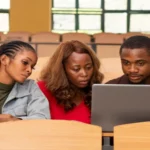
The concept of Virtual Reality has been around for a while, but it’s only in recent years that technology has become more accessible and practical. In this article, we will explore what virtual reality is. Its origins, relation to education, the advantages and disadvantages, and how it is changing the scope of education in 2023.
What is Virtual Reality?
Virtual Reality refers to a computer-generated, 3D environment that can be interacted with by a person. It typically uses special headsets or devices. It creates a simulated reality that engages the user’s senses, such as sight, hearing, and sometimes touch, to make them feel as if they are present in a different world or environment.
How did it come to play?
The concept of virtual reality dates back several decades, but it was in recent years that technological advancements made it more accessible and practical. The origins of VR can be traced back to the 1960s when researchers and inventors began experimenting with head-mounted displays and interactive simulations. Over the years, VR technology progressed, and in the 1990s, companies like Sega and Nintendo introduced VR gaming systems, though they were limited in their capabilities and popularity.
It was not until the 2010s that VR truly took off with the introduction of more advanced headsets like the Oculus Rift and HTC Vive. These devices offered high-quality visuals, precise tracking, and motion controllers, enabling users to have more immersive experiences. The affordability and accessibility of these devices, coupled with the development of educational applications, paved the way for the integration of VR in various fields, including education.
How does it relate to education?
Virtual Reality has the potential to reshape education by providing immersive and interactive experiences that go beyond traditional classroom settings. It allows students to step into realistic virtual environments and explore concepts in a more engaging and hands-on manner. VR can be used across different educational levels, from elementary schools to universities, and across various subjects, including science, history, art, and more.
Advantages
- Enhanced Engagement: VR creates a sense of presence and immersion that captivates students’ attention and keeps them engaged in the learning process. By transporting them to virtual environments, students are more likely to be actively involved, leading to improved focus and retention of information.
- Experiential Learning: VR offers experiential learning opportunities that go beyond textbooks and lectures. Students can participate in virtual experiments, visit historical sites, explore distant locations, or interact with virtual objects, making learning more tangible and memorable.
- Individual Learning: VR can cater to individual learning styles and preferences. Students can navigate virtual environments at their own pace, repeat simulations as needed, and receive immediate feedback, enabling learning experiences that cater to their unique needs.
- Collaboration and Communication: VR enables students to collaborate and communicate with peers and teachers in virtual spaces, fostering teamwork and social interaction. Students can work together on projects, discuss ideas, and even attend virtual lectures or conferences, transcending physical limitations.
Disadvantages
- Cost: VR technology, including headsets and equipment, can be costly, making it challenging for educational institutions with limited budgets to implement it on a large scale. However, as technology advances and becomes more accessible, costs are expected to decrease.
- Technical Limitations: VR experiences require robust hardware and software infrastructure to ensure smooth operation. Technical issues like latency, motion sickness, or hardware compatibility can hamper the learning experience and require technical support and expertise.
- Safety Concerns: Extended use of VR headsets can cause discomfort and even motion sickness for some individuals. This can limit the duration of VR sessions and may require breaks to prevent discomfort. Additionally, there may be concerns regarding the physical safety of students while wearing VR headsets, as they may be less aware of their immediate surroundings.
- Limited Content Availability: While the range of educational VR content has been expanding rapidly, it may still be limited compared to traditional educational resources. Developing high-quality, curriculum-aligned VR experiences requires time, resources, and expertise, which may pose challenges for educators in finding suitable content for all subjects and topics.
How Virtual Reality is Changing the Scope of Education
The integration of virtual reality in education is already reshaping the way students learn and teachers instruct. With VR, students can explore complex concepts and environments that were previously inaccessible, fostering a deeper understanding of abstract ideas. It enables students to see scientific phenomena, walk through historical periods, or manipulate virtual objects, enhancing their comprehension and critical thinking skills.
Moreover, VR provides opportunities for inclusive education by accommodating diverse learning styles and catering to students with special needs. Students with visual impairments, for example, can experience virtual environments that simulate visual experiences, bridging the accessibility gap and promoting inclusivity.
Virtual reality also allows for distance learning and global collaboration. Students from different geographical locations can come together in a shared virtual space, breaking down physical barriers and fostering cultural exchange. It opens up avenues for collaboration between schools, universities, and even experts from various fields, creating a global network of learning and knowledge sharing.
Additionally, VR can support vocational training and professional development. Students can simulate real-world scenarios, practice skills, and receive feedback in a safe and controlled virtual environment. This has significant implications for fields such as healthcare, engineering, and aviation, where hands-on training is critical but may pose risks or be expensive in real-life settings.
Skill Development Through VR Simulations
Have you ever wondered what it would be like to perform surgery or design a bridge? With VR simulations, students can now experience these professions firsthand. Virtual Reality offers a safe and controlled environment for students to practice practical skills. From medical procedures to engineering prototypes, VR simulations provide an invaluable opportunity to refine abilities, boosting proficiency and confidence. By repeating tasks in the virtual realm, students can experiment, make mistakes, and learn from them without real-world consequences. It’s like having a personal mentor guiding you every step of the way.
Effective learning
One of the greatest advantages of VR simulations is the ability to repeat tasks and learn from mistakes without any real-world consequences. Students can experiment, make adjustments, and observe the immediate outcomes within the virtual environment. This iterative process allows for continuous improvement and builds confidence in their skills.
Virtual Reality simulations offer a level of reality that traditional teaching methods often lack. Students can experience the difficulties of a task, such as the precision required in a surgical procedure or the attention to detail in architectural design. The immersive nature of VR creates a sense of presence, making the learning experience more engaging and memorable.
Accessibility
Virtual Reality simulations provide students with the opportunity to explore fields that may not be readily accessible to them. For example, aspiring surgeons can practice surgical techniques before entering an operating room, giving them a head start in their medical education. Engineering students can design and test prototypes virtually, saving time and resources compared to physical prototypes.
Individual needs
Moreover, Virtual Reality can be adapted to cater to students’ individual needs. Educators can adapt the difficulty level or provide additional guidance based on each student’s progress and skill level. This approach ensures that students are challenged appropriately and can progress at their own pace, fostering a sense of achievement and motivation.
It is important to note that VR simulations go beyond the development of technical skills. They also promote critical thinking, problem-solving, and decision-making abilities. Students are encouraged to analyze situations, devise strategies, and evaluate the outcomes of their actions within the virtual environment. These cognitive skills are essential for success in various disciplines and real-world scenarios
Personal and Adaptive Learning in VR
No two students are the same, and Virtual Reality recognizes this by facilitating personal and adaptive learning experiences. VR systems can track student interactions and performance, providing valuable data that educators can use to tailor content and offer individualized feedback. Imagine a virtual tutor who understands your unique learning style, pacing the material to match your needs. VR’s adaptability ensures that students can learn at their own pace, making education more inclusive and effective. The immersive nature of VR also enhances engagement and motivation, leading to a deeper understanding of the subject matter.
Enhanced Spatial and Visual Understanding
Abstract concepts, such as molecular structures or architectural designs, often pose challenges for students to see. Imagine walking through a virtual representation of a cell, examining its organelles up close, or exploring the intricate details of a historical monument. With VR, students can manipulate objects, examine them from various angles, and gain a deeper comprehension of complex concepts. It’s like stepping into the pages of a textbook and watching the content come alive.
Virtual Collaboration and Teamwork
Collaboration is a crucial skill in the 21st century, and Virtual Reality provides a platform for students to collaborate and work together seamlessly. By creating shared virtual spaces, students can collaborate on projects, solve problems as a team, and communicate in real-time, irrespective of their physical location. VR transcends the limitations of distance and time, fostering essential teamwork and communication skills. Imagine working on a group assignment with classmates from different countries, exchanging ideas, and building upon each other’s contributions. The immersive nature of VR makes the collaboration feel real, enabling students to develop vital social and interpersonal skills.
Cultural and Historical Immersion
Traveling back in time or exploring different cultures has never been easier than with Virtual Reality. Through VR, students can immerse themselves in historical periods or experience the vibrant diversity of various cultures. It’s like stepping into a time machine or teleporting to a different part of the world. By virtually visiting ancient civilizations or witnessing significant historical events, students develop a deeper appreciation for history and cultural diversity. They can interact with historical figures, explore archaeological sites, or participate in cultural rituals, fostering empathy, cultural understanding, and global awareness.
Assessments and Data-Driven Insights
Traditional assessments often fail to capture the true capabilities and progress of students. Virtual Reality offers a new approach to assessments, providing valuable data-driven insights. VR-based assessments can capture real-time data on student performance and interactions within the virtual environment. Imagine a science experiment where students’ movements, decisions, and problem-solving skills are recorded and analyzed. This data can provide educators with a comprehensive understanding of students’ strengths and areas for improvement. With these insights, educators can tailor their instruction, provide targeted support, and tailor the learning experience for each student. VR assessments not only offer a more accurate representation of students’ abilities but also provide a more engaging and immersive assessment experience.
Virtual Reality is transforming education by unlocking new possibilities for immersive and experiential learning. Through VR simulations, students can develop practical skills in a safe and controlled environment. Individual and adaptive learning in VR ensures that students can learn at their own pace, boosting engagement and understanding. Enhanced spatial and visual understanding through VR allows students to explore complex concepts with ease. Virtual collaboration and teamwork transcend physical boundaries, fostering vital skills for the future. Cultural and historical immersion in VR promotes empathy and global awareness. Lastly, VR assessments provide data-driven insights, enabling educators to tailor instruction effectively.
To fully harness the potential of virtual reality in education, educational institutions need to embrace this technology and invest in the necessary infrastructure and resources. Teachers and educators should be provided with training and support to effectively integrate VR into their teaching practices. Collaboration between educators, developers, and researchers is crucial to ensure the development of high-quality, curriculum-aligned VR content that enhances learning outcomes



